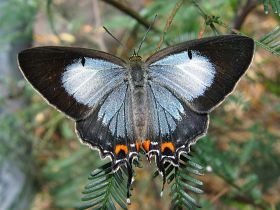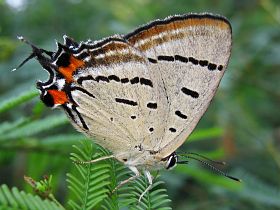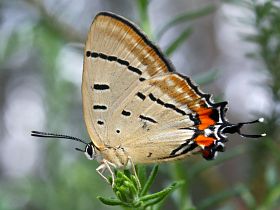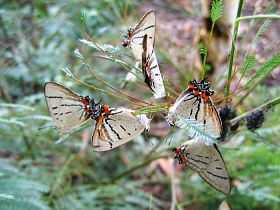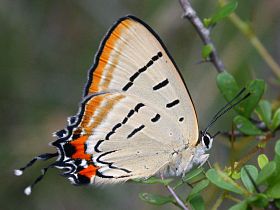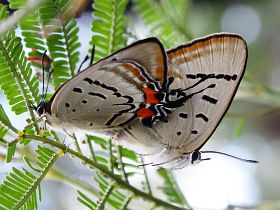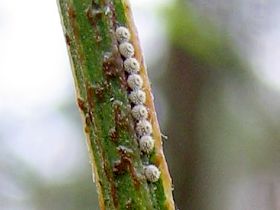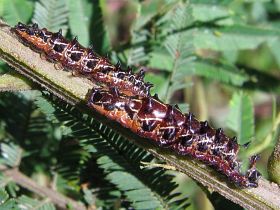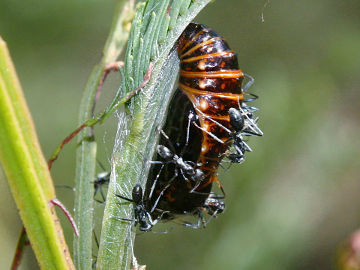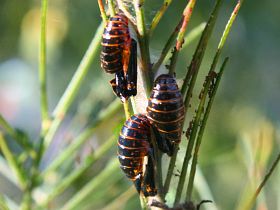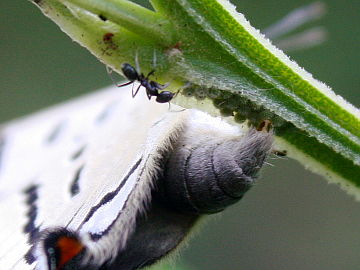Imperial Hairstreak (Jalmenus evagoras)
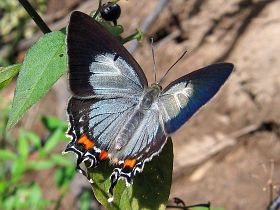
Appearance: Upperside dark grey with extended light blue areas. Underside light brown with characteristic pattern of black lines and spots. Long tail on the hind wing.
Wingspan: 3.0–4.0 cm
Season: 2–3 generations from spring until autumn.
Range: Central and eastern VIC, eastern NSW, and south-eastern and eastern QLD.
Habitat: Forest and woodland.
Photo: Male, Lane Cove NP, NSW, 08 / 03 / 2008.
Notes
The Imperial Hairstreak is a common and widespread species across the temperate and subtropical areas of south-eastern Australia. The butterflies have a rather unusual lifestyle in that they spend most of their life in close symbiosis with ants. After hatching, the caterpillars feed on the leaves of Acacia plants. Through special pheromones they attract ants which permanently surround and guard the caterpillars. The adult butterflies also remain close to the larval food plants, where males can often be found resting on branches in large numbers, waiting for the opportunity to mate with freshly emerged females.
The Imperial Hairstreak appears to prefer small and young Acacia plants, and often the populated plants get stripped off their leaves by the large number of ever-hungry caterpillars. Hence, the easiest way to find this magnificent butterfly is to look out for small Acacia shrubs with a large number of ants along their branches and feeding traces on their leaves.
There are several very similar species in the genus Jalmenus, most of which are not quite as common and widespread as the Imperial Hairstreak. Usually, the Imperial Hairstreak has the light blue areas on the upperside of the wings brighter and more distinct, and the dark lines on the underside broader and more sharply defined compared to other species.
Additional Photos
